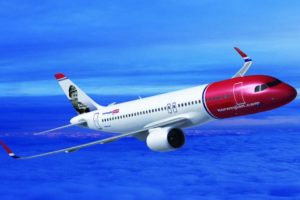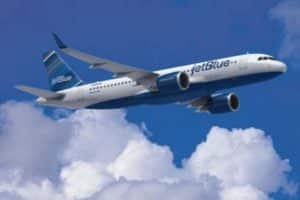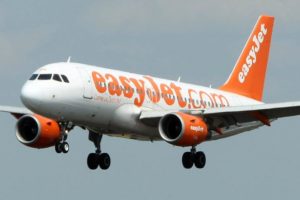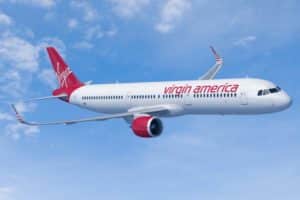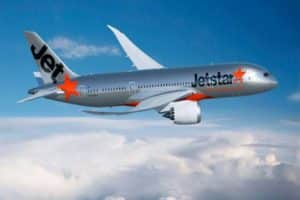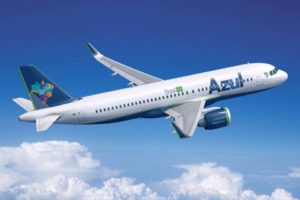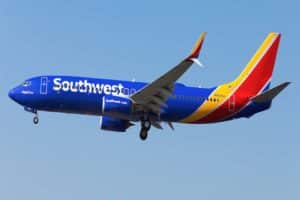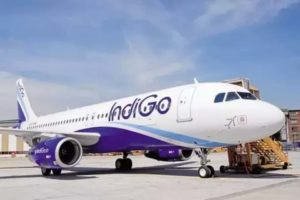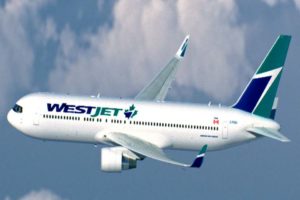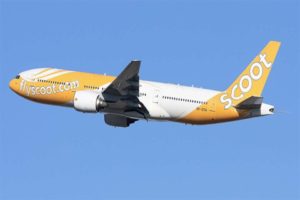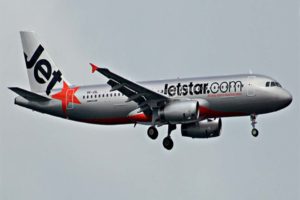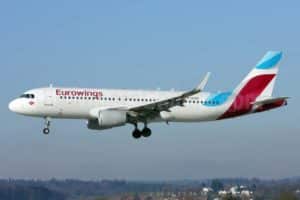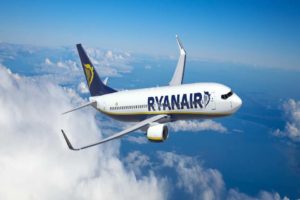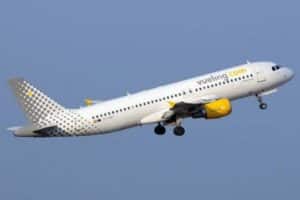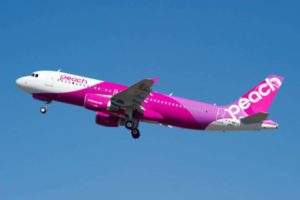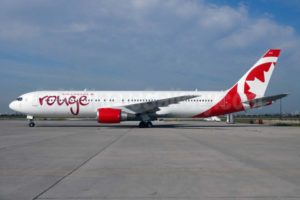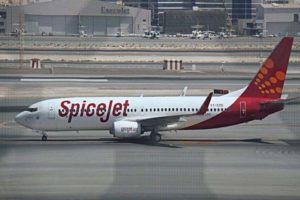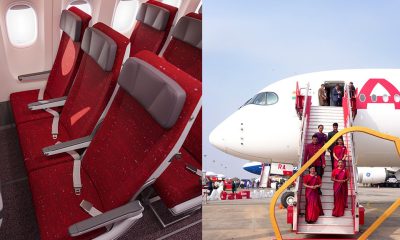Aviation
Top 20 World’s Best Low-Cost Airlines 2017

1. AIRASIA, MALAYSIA
Impressively, AirAsia is the world’s best low-cost airline for the 9th year running. Based in Kuala Lumpur, Malaysia, the airline operates an extensive network covering more than 120 destinations in 26 countries across Asia, Australia and New Zealand, the Middle East and the USA. Just 15 years ago, the airline was a failing state-owned business but was rapidly turned around by CEO Tony Fernandes.
2. NORWEGIAN AIR, NORWAY
Also voted best long-haul low-cost airline and best low-cost airline in Europe, Norwegian Air comes in second on this list. The company flies to more than 100 destinations throughout Europe, Asia, Africa, the Middle East and the USA – making headlines earlier this year when it offered one-way flights between Dublin and New York for just $90 (£69). Its planes are instantly recognizable as they each have a red nose and portraits of famous Scandinavians on their tail fins.
3. JETBLUE AIRWAYS, USA
“You above all” is the reassuring slogan of JetBlue Airways, credited with raising the standards of low-cost carriers in the US thanks to its friendly-service, satellite TV and free snacks. With headquarters in New York, the carrier has routes to 102 destinations across North, Central and South America. The company recently announced plans to remove its schedules from 11 online travel sites to encourage direct bookings, thereby cutting the commission it pays to third parties.
4. EASYJET, UK
No-frills British airline easyJet burst onto the scene in 1995, launched by self-titled ‘serial entrepreneur’ Stelios Haji-Ioannou. It’s now the second-largest airline in Europe by number of passengers, behind Ryanair, carrying around 73 million people annually. EasyJet flies to more than 100 destinations throughout Europe and North Africa.
5. VIRGIN AMERICA, USA
Virgin America prides itself on offering a top-notch service at an affordable price. Even passengers in the main cabin can expect mood lighting, snacks, power outlets, wi-fi, leather seats and video touchscreens in every seatback. Those flying in Select and First Class have more legroom and premium meals. Virgin America flies to 21 destinations across the US, plus three in Mexico.
6. JETSTAR AIRWAYS, AUSTRALIA
Jetstar Airways is based in Melbourne and promotes itself as “Australia’s No. 1 Low Fares Airline”. Founded in 2004, the company flies to destinations throughout Australia and New Zealand and also has routes to China, Japan, Vietnam, the US, Thailand, Malaysia, Fiji, Indonesia and the Cook Islands. Jetstar Airways is wholly owned by Qantas Airways, which offers a more premium service.
7. AIRASIAX, MALAYSIA
Long-haul and low-cost carrier AirAsiaX has flown over 19 million passengers since it launched its maiden flight 10 years ago. It currently serves 23 destinations across Asia, Australia, New Zealand, the Middle East and Africa. Earlier this year, founder Tony Fernandes ended speculation that the airline would return to Europe and start flying to the US, confirming the company will remain focused on Asia only.
8. AZUL LINHAS AÉREAS BRASILEIRAS, BRAZIL
Azul Linhas Aéreas Brasileiras is the latest success of co-founder David Neelemen, who also helped build JetBlue and WestJet. Founded in 2008, the São Paulo-based budget airline’s success is largely down to the fact it began by targeting under-served cities throughout Brazil. Its fleet of 125 jets now fly to more than 100 destinations throughout Argentina, Bolivia, French Guiana, Portugal, the USA, and Uruguay.
9. SOUTHWEST AIRLINES, USA
The world’s largest low-cost carrier, Southwest Airlines has more than 700 Boeing 737 jets and operates more than 4,000 flights a day in peak season. The Dallas-based airline flies to around 100 destinations across the US, South America and the Caribbean.
10. INDIGO, INDIA
New Dehli-based IndiGo is the largest airline in India in terms of passengers carried – a total of 41 million people last year. One of the fastest-growing aviation companies in Asia, it’s about to add another 400 Airbus jets to its current fleet of 100. IndiGo flies to 46 destinations, most of which are domestic, but also airports in Nepal, Oman, Qatar, Singapore and Thailand, along with Dubai and Sharjah in the United Arab Emirates.
11. WESTJET, CANADA
Launched in 1996, WestJet was originally a small regional airline but has grown to become the second-largest carrier in Canada. The cost-conscious company now flies to more than 100 destinations throughout Canada, Central America, Mexico, Europe and the Caribbean – and plans to expand into Asia and South America in the next few years.
12. SCOOT, SINGAPORE
Owned by Singapore Airlines, Scoot was launched in 2012. The company offers a no-frills, low-cost service alongside business class ‘ScootBiz’, which offers extra legroom and larger, leather seats. Scoot operates services in Singapore, Honolulu, China, Malaysia and the Gold Coast of Australia.
13. JETSTAR ASIA, SINGAPORE
Jetstar Asia, an off-shoot of Jetstar Airways, flew into the skies in 2004. A latecomer to the budget aviation market, the business differentiated itself from other airlines by traveling within a five-hour radius of Singapore, while its competitors didn’t go beyond four hours. Jetstar Asia travels to around 100 destinations across India, China, Malaysia, Thailand, Singapore, Cambodia, New Zealand and Australia.
14. EUROWINGS, GERMANY
Low-cost carrier Eurowings flies to more than 150 destinations throughout Europe as well as Thailand and South Africa. The company offers passengers three fare options for both short and long-haul flights: Basic (flight only), Smart (preferred seating, food and luggage included) and Best (premium seating and legroom, à la carte catering and in-flight entertainment). Its parent company, Lufthansa, recently bought over 81 of Air Berlin’s plane, increasing the Eurowings fleet to 210 aircraft.
15. RYANAIR, IRELAND
Dublin-based Ryanair is Europe’s largest airline in terms of passenger numbers. The company serves 34 countries throughout the continent as well as Morocco and Israel. The budget airline made the list despite cancelling thousands of flights this summer after a ‘mess-up’ in how it scheduled time off for pilots. Customer satisfaction improved from 2014 when Ryanair allowed customers two free carry-on bags. But, from January 2018, passengers will be charged for the privilege.
16. VUELING AIRLINES, SPAIN
Spain’s second-largest carrier, Vueling flies to over 160 destinations throughout Europe, Africa and Asia. The company, based in Barcelona, offers three fares: Basic, Optima (allocated seating and check-in luggage) and Excellence (front row, allocated seating, priority boarding, larger luggage allowance). The airline flew 2 million passengers in the UK during the summer 2017, an 8% increase from the summer season of 2016.
17. TIGERAIR, SINGAPORE
Tigerair Singapore merged with Scoot in July 2017 and now operates under that name, but before all this it was voted the 17th best low-cost airline in the world. The economy service continues to operate flights throughout southeast Asia, Bangladesh, China and India. (This entry does not refer to Tigerair Australia, which is a different operation entirely.)
18. PEACH, JAPAN
Japanese airline Peach operates 14 domestic routes and flies to 15 international destinations across Hong Kong, China, Thailand, Taiwan and South Korea. Passengers can chose between three fares: Simple, Value and Prime, with the more expensive options offering allocated seats, additional legroom and bigger luggage allowances.
19. AIR CANADA ROUGE, CANADA
A low-cost subsidiary of Air Canada, Air Canada Rouge began operating in 2013 with just four aircraft. The company now has 49 planes and flies to more than 90 popular destinations throughout Canada, Europe, the Caribbean, South America and the USA. The airline is currently in the process of adding high-speed wi-fi to its entire fleet. All Airbus 319s will be equipped by spring, followed by its Airbus 321s and Boeing 767s later in 2018.
20. SPICEJET, INDIA
In 2014, Indian airline SpiceJet was about to fold – and was even forced to cancel 2,000 flights because it couldn’t afford to pay for oil. Its fortunes changed when chairman Ajay Singh took over and it’s now the third-largest carrier in the country. SpiceJet now operates more than 300 flights to 55 destinations throughout India, China, Thailand, Saudi Arabia, the United Arab Emirates, Afghanistan, Nepal and Sri Lanka.

Aviation
Boeing says 787 Dreamliner aircraft is safe
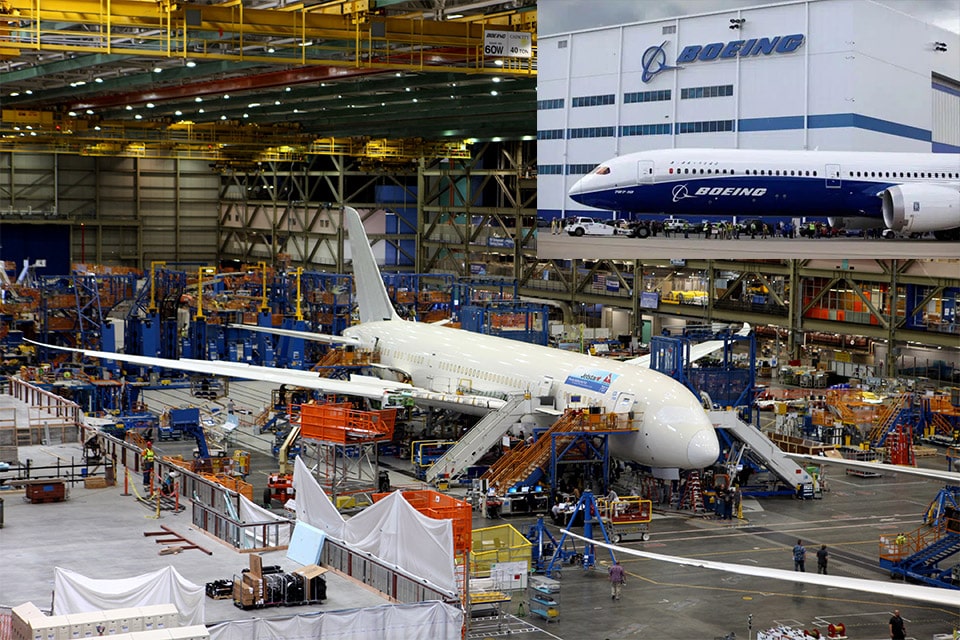
Boeing is standing firm on the safety and durability of its 787 Dreamliner aircraft despite mounting criticism and whistleblower allegations.
In response to concerns raised by whistleblowers and ahead of a congressional hearing, the aviation giant emphasized its rigorous testing protocols and asserted confidence in the integrity of its planes.
During a media briefing accompanied by a PowerPoint presentation, boeing aircraft
reiterated its confidence in the safety of both the 787 and 777 aircraft models. Senior engineers showcased extensive testing procedures aimed at refuting claims that approximately 1,400 Boeing planes may be afflicted by significant safety issues. The company addressed specific allegations, including concerns about gaps in manufacturing processes that could lead to premature fatigue failure over time.
The upcoming Senate hearing is expected to feature testimony from Boeing engineer Sam Salehpour, who has publicly criticized boeing airplanes safety practices and alleged retaliation for speaking out. Salehpour’s claims, currently under investigation by the FAA, include allegations of workers resorting to extreme measures during assembly, such as “jumping on pieces of the airplane” to align them.
Boeing officials stressed that thorough inspections of nearly 700 in-service Dreamliner jets revealed zero airframe fatigue findings, even after six and twelve years of heavy maintenance inspections. These results have been shared with the FAA, according to Boeing’s chief engineer, Steve Chisholm. He emphasized that the materials used in the construction of the 787 were specifically chosen for their resistance to fatigue and corrosion.
In response to Salehpour’s accusations of shortcuts in assembly processes, boeing planes
acknowledged instances where shims were not of the proper size and where areas did not meet skin-flatness specifications. However, the company dismissed claims of excessive force during assembly, stating that such practices were not part of their standard procedures.
Aviation
How to Utilize American AAdvantage Miles for Etihad Flights
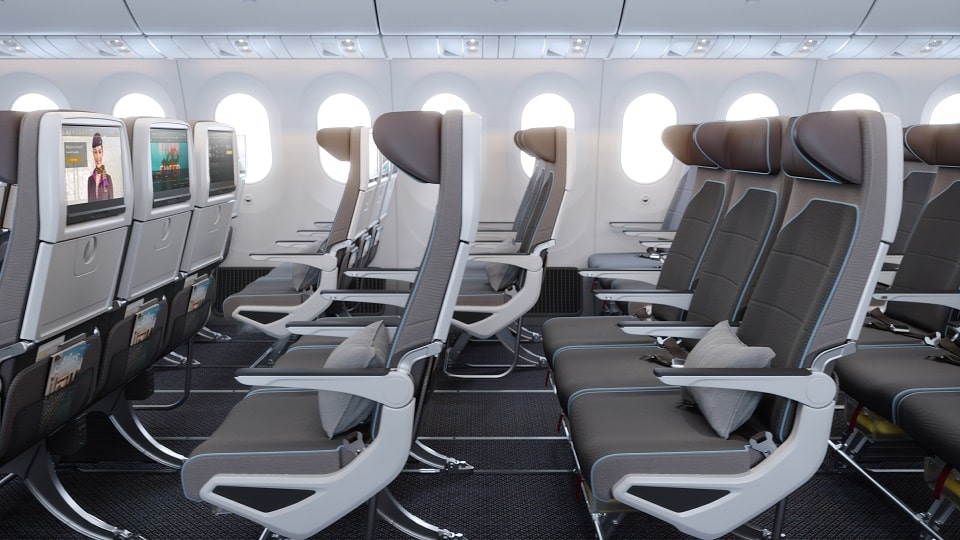
Are you eager to make the most of your American AAdvantage miles by exploring exotic destinations served by Etihad Airways? Look no further! This guide will walk you through the process of redeeming your AAdvantage miles for Etihad flights, ensuring you unlock the full potential of your rewards.
Etihad Airways’ partnership with American Airlines opens up a world of possibilities, allowing travelers to access a wider range of destinations and flight choices. jetnet american airlines What’s more, passengers can earn AAdvantage miles for their Etihad flights, enhancing the value of their travel experiences.
To start earning Etihad Guest miles, one convenient option is through credit card rewards. While Etihad doesn’t offer a U.S.-based cobranded credit card, you can seamlessly transfer rewards from renowned programs like American Express Membership Rewards, Capital One, and Citi ThankYou Rewards at a 1:1 ratio.
Once you’ve accumulated your miles, it’s time to embark on your Etihad journey. But how do you ensure your flights are credited to your American AAdvantage account? concierge key american airlines Fear not, for the process is simple. After your Etihad flights, wait at least three days before requesting to add them to your AAdvantage account. Utilize the provided form, entering your AAdvantage number and the 13-digit ticket number. Additional information may be required, readily available on your boarding pass stub or ticket receipt.
Etihad Airways boasts an extensive network, particularly in North America, with flights to major cities including Boston, Chicago, New York, Toronto, and Washington. Whether your wanderlust leads you to the Maldives, India, Sri Lanka, or South Africa, Etihad can serve as your gateway to these captivating destinations.
Now, let’s talk redemption. If you’re eyeing the dream of using your AAdvantage miles for etihad airport, rest assured, the process aligns with the standard AAdvantage partner award chart. To provide clarity, consider these examples of one-way business aa pricing:
- From the United States to the Middle East and India for 70,000 miles
- Venture from the United States to Africa for 75,000 miles
For those seeking the epitome of luxury in first class
- Luxuriate in a flight from Abu Dhabi to London for 62,500 miles
- Indulge in a journey from Abu Dhabi to New York for 115,000 miles
With these redemption options, your AAdvantage miles can transform into unforgettable travel experiences aboard Etihad Airways.
Aviation
Is Russia’s dream of competing with Airbus and Boeing turning into a nightmare? Russian MC21 delay
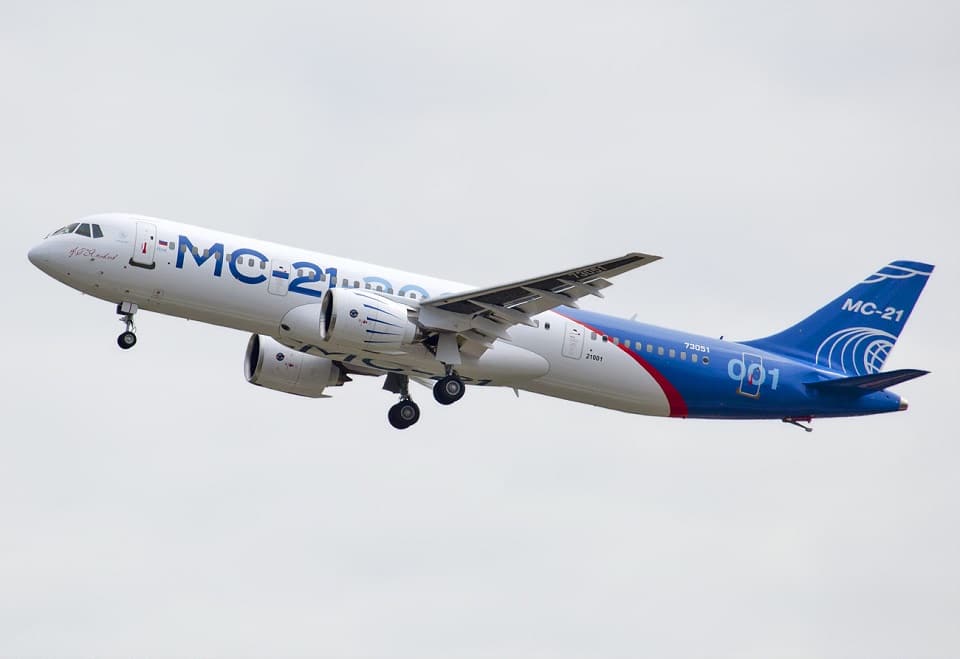
The much-anticipated Russian competitor to Airbus A320neo and Boeing 737 MAX, the Yakovlev MC-21, is encountering yet another setback as its first deliveries are pushed back to 2025 or 2026.
Rostec CEO Sergei Chemezov disclosed the extended timeline, underscoring the ongoing challenges plaguing Russia’s aerospace industry.
Originally slated for delivery to the state-owned Aeroflot group in 2022, the MC-21’s schedule has been repeatedly pushed back, with 2024 being the subsequent target. However, amidst the aftermath of Russia’s involvement in Ukraine and ensuing international sanctions, the project has faced significant hurdles.
The conflict in Ukraine has triggered sanctions from the United States, European Union, and other Western nations, severely impeding Russia’s aerospace sector. Access to vital components and technology has been curtailed, impinging upon the MC-21’s development and production. The situation necessitated a shift away from reliance on foreign elements, with a focus on domestic alternatives to mitigate the impact of sanctions.
Initially hailed for its groundbreaking design featuring an innovative composite wing and reliance on foreign components like the Pratt & Whitney PW1400G engines, the MC-21 project has to adapt swiftly in the face of mounting challenges. The recent wave of sanctions has intensified the isolation of Russia’s aerospace sector, underscoring the pressing need for self-reliance in aircraft production.
Looking ahead, Rostec envisions a more optimistic trajectory, expressing its intent to ramp up production to 72 aircraft annually by the year 2029. Yet, achieving such aspirations hinges upon overcoming the multifaceted hurdles posed by ongoing sanctions and geopolitical tensions.


